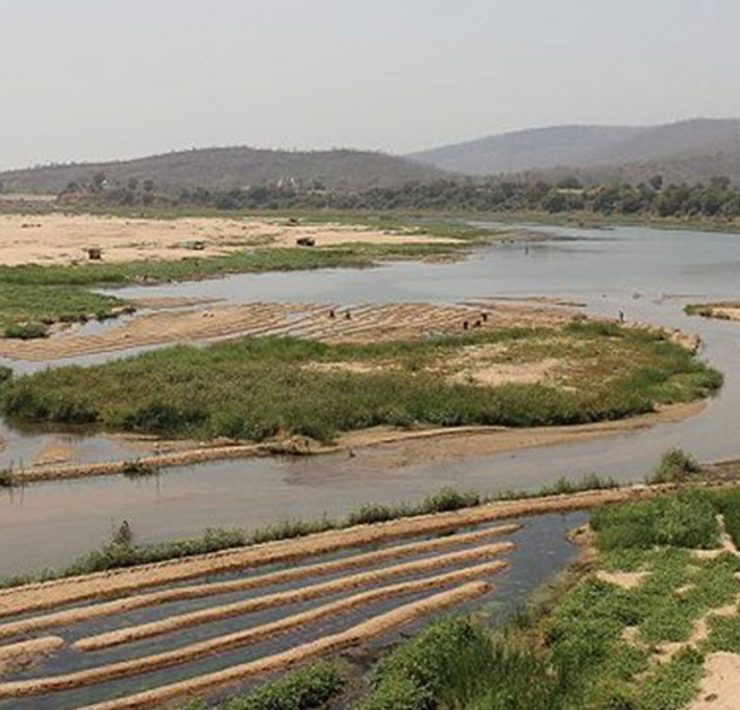Why a Weakening Gulf Stream Could Bring Extreme Weather Conditions
- ‘If the Gulf Stream crosses its tipping point, it will continue to weaken even if we have managed to stop global warming.’

All of the World’s oceans are connected by an oceanic current known as the ‘Conveyor Belt’, and climate change may result in changes in the system which could give rise to extreme weather conditions. The oceanic current, essentially water circulation, is driven by differences in temperature in places and due to the difference in salinity of water.
A part of this large and global scale ocean stream, known as the Gulf Stream, plays an important role in determining weather conditions in parts of Europe, the UK and US. The Gulf Stream is the flowing of warm water from the equator towards the poles where it cools down. Evaporation of water also occurs alongside, increasing the salt concentration. A low temperature and high salt content makes the water heavier resulting in it sinking lower. Then it moves again towards warmer areas and the circulation continues.
The global circulations ensure that the oceans are mixed and energy is distributed to all parts. However, man-made climate change has disturbed the Gulf Stream greatly. According to a recent study in the British science journal Nature, the Gulf Stream (also known as the Atlantic Meridional Overturning Circulation or the AMOC) has slowed down and its speed is slowest seen in over a millennium.
The unprecedented slowing of the stream will impact weather conditions and sea levels on both sides of the Atlantic Ocean. If climate change continues unabated then the situation will end up being worse, the researchers found. Commenting on the danger of persistent global warming, as is happening now, Levke Caesar, the lead author of the study said: “By the year 2100, the gulf stream could pass a tipping point, if the current rate of global warming continues to persist”.
Caesar is a climatologist at the Maynooth University, Ireland. He hinted that the flow of the Gulf Stream could cease completely and that it could come to a standstill by the turn of the next century.
If this happens then sea levels could rise near the coasts of North America and north-western Europe along with more extreme weather events like heat waves and intensified cyclones.
“If the Gulf Stream crosses its tipping point, it will continue to weaken even if we have managed to stop global warming. Afterwards, it will slow down by a lot, coming close to a complete shutdown of the circulation,” he further explained.
As part of the study researchers analysed the history of its flow over about 2000 years. However, this was a tricky job as there was flow measurement data over the last two decades. The team of researchers then resorted to proxy data; gathering data from environmental archives, for example, and from tree rings or ice cores. This helped the team to study the stream flow in a broader perspective.
The researchers used proxy data from 11 different sources which included temperature records, Atlantic slit data, deep-sea coral record etc. Armed with these the team had a comprehensive understanding of how the Gulf Stream had been flowing or of how warm it had been for over the past 1600 years.
Their analysis showed that the stream current suddenly slowed at around the year 1850, which marked the end of the mini ice age. The mini ice age is a period between 1300 to 1850 which marked global cooling. The second and more dramatic decline in the stream’s flow emerged in the middle of the 20th century. Since thenstream has slowed down by an additional 15%, the researchers found.
The main contributor to this, according to the researchers, is global warming and man-made climate change. Global warming accelerated the melting of ice sheets in the North Atlantic. It also increased annual rainfall. Both these factors together result in more freshwater into the ocean, which simultaneously decreases the salinity and density of water. The researchers concluded that the increased freshwater stalled the flow of the stream back south and thus weakened its overall flow.
With the current rate of climate change and global warming persisting the Gulf Stream could further weaken by additional 45% till the year 2100, an event which will have an irreversible impact on climatic conditions.
This article first appeared on Newsclick on 8th March.










